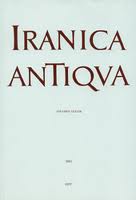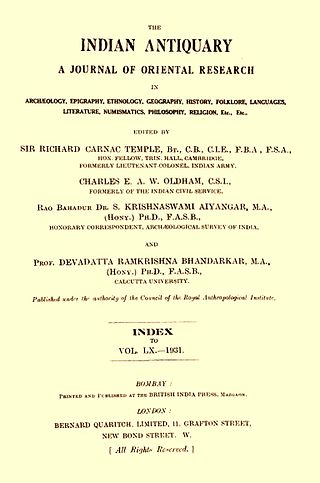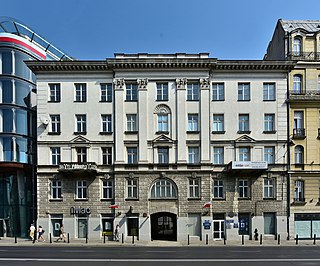
Arabian Archaeology and Epigraphy or AAE is a scholarly journal for articles relating to the ancient Arabian Peninsula region.

Arabian Archaeology and Epigraphy or AAE is a scholarly journal for articles relating to the ancient Arabian Peninsula region.
In recent years, the Arabian peninsula has emerged as one of the major new frontiers of archaeological research in the Old World. Arabian Archaeology and Epigraphy is a forum for the publication of studies in the archaeology, epigraphy, numismatics, and early history of Bahrain, Kuwait, Oman, Qatar, Saudi Arabia, the United Arab Emirates, and Yemen.
Articles and short communications in English, French, and German are published, and may treat with matters ranging from prehistory to the Islamic era. Also, studies touching on different parts of the region and their relations with neighbouring areas such as Africa, the Levant, Mesopotamia, Iran, and the Indus Valley are invited. Studies pertaining more directly to these areas, however, are considered only if the link to the Arabian peninsula is clear and of central importance.
Contributions concerned with inscriptions from the Arabian peninsula, whether recorded in the field or housed in public and private collections around the world, are also welcomed.
The journal was founded in 1990 and is published bi-annually in May and November. A different photograph features on the journal cover each year. It is published under ISSN 0905-7196 (print version) and ISSN 1600-0471 (online ISSN). The journal was founded by Prof. Dr Daniel T. Potts, editor-in-chief of the journal until 2015. The current editors are Dr Bruno Overlaet (editor-in-chief; Royal Museums of Art and History, Brussels, Belgium) and Dr. Peter Stein (associate editor, Friedrich-Schiller-Universität, Jena, Germany).

The Arabian Peninsula, or Arabia, is a peninsula in Western Asia, situated northeast of Africa on the Arabian Plate. At 3,237,500 km2 (1,250,000 sq mi), the Arabian Peninsula is the largest peninsula in the world.

Near Eastern archaeology is a regional branch of the wider, global discipline of archaeology. It refers generally to the excavation and study of artifacts and material culture of the Near East from antiquity to the recent past.

The Bujang Valley is a sprawling historical complex and has an area of approximately 224 square kilometres (86 sq mi) situated near Merbok, Kedah, between Gunung Jerai in the north and Muda River in the south. It is the richest archaeological area in Malaysia.

Failaka Island is a Kuwaiti Island in the Persian Gulf. The island is 20 km off the coast of Kuwait City in the Persian Gulf. The name "Failaka" is thought to be derived from the ancient Greek φυλάκιο(ν) – fylakio(n) "outpost".

Khawr Rawrī or Khor Rori is a bar-built estuary at the mouth of Wādī Darbāt in the Dhofar Governorate, Oman, near Taqah. It is a major breeding ground for birds, and used to act as an important harbour for frankincense trade when it was an open estuary. Khor Rori has been identified as the location of Moscha Limen and Abyssapolis in ancient Greek literature. The area represents a popular tourist spot within Oman and since 2000, is a part of the UNESCO World Heritage Site, the Land of Frankincense.
Juris Zarins (Zariņš) is an American-Latvian archaeologist and professor at Missouri State University, who specializes in the Middle East.
Jōn al Kuwayt, also known as Kuwait Bay, is a bay in Kuwait. It is the head of the Persian Gulf. Kuwait City lies on a tip of the bay.

The present-day Sultanate of Oman lies in the south-eastern Arabian Peninsula. There are different definitions for Oman: traditional Oman includes the present-day United Arab Emirates (U.A.E.), though its prehistoric remains differ in some respects from the more specifically defined Oman proper, which corresponds roughly with the present-day central provinces of the Sultanate. In the north, the Oman Peninsula is more specific, and juts into the Strait of Hormuz. The archaeology of southern Oman Dhofar develops separately from that of central and northern Oman.

Ḥarrat Khaybar is a volcanic field located north of Medina in the Hejaz, Saudi Arabia. It covers an area approximately 12,000 km2 (4,600 sq mi). The most recent eruption occurred between 600 and 700 AD. Man-made stone structures dating to the Neolithic period have been studied in Harrat Khaybar.

Iranica Antiqua is a scholarly journal publishing papers on ancient Iran in its broadest sense. The journal was established by Iranist Roman Ghirshman and Louis Vanden Berghe in 1961. The journal is edited by Prof. Em. Dr Ernie Haerinck and Dr. Bruno Overlaet, Belgium. Articles are in French, English or German.

Tell Abraq was an ancient Near Eastern city. Located on the border between Sharjah and Umm Al Quwain in the United Arab Emirates about 50 kilometers north-east of Dubai, the city was originally on the coastline of the Persian Gulf but changing sea levels have placed the remains of the city inland. It is located on the main road from Umm Al Quwain to Falaj Al Mualla.

Timothy Insoll is a British archaeologist and Africanist and Islamic Studies scholar. Since 2016 he has been Al-Qasimi Professor of African and Islamic Archaeology at the University of Exeter. He is also founder and director of the Centre for Islamic Archaeology. Previously he was at the Department of Archaeology at the University of Manchester (1999–2016).
Saruq Al Hadid is an archaeological site in Dubai, United Arab Emirates (UAE), and stands as one of the most important and enigmatic historical sites in the country. Findings from the site are displayed in a museum with the same name in the city of Dubai. The site was originally discovered by the ruler of Dubai, Sheikh Mohammed bin Rashid Al Maktoum, while flying his helicopter across the desert.

The Indian Antiquary: A journal of oriental research in archaeology, history, literature, language, philosophy, religion, folklore, &c, &c was a journal of original research relating to India, published between 1872 and 1933. It was founded by the archaeologist James Burgess to enable the sharing of knowledge between scholars based in Europe and in India and was notable for the high quality of its epigraphic illustrations which enabled scholars to make accurate translations of texts that in many cases remain the definitive versions to this day. It was also pioneering in its recording of Indian folklore. It was succeeded by The New Indian Antiquary (1938–47) and the Indian Antiquary (1964–71).

The Polish Centre of Mediterranean Archaeology University of Warsaw operates as an independent research institute of the University of Warsaw under the present name since 1990. It is dedicated to organizing, implementing and coordinating archaeological research, both excavations and study projects, as well as conservation, reconstruction and restoration projects, in northeastern Africa, the Near East and Cyprus. Projects include sites covering a broad chronological spectrum from the dawn of civilization through all the historic periods of the ancient Mediterranean civilizations to Late Antiquity and early Islam. Tasks beside fieldwork include comprehensive documentation of finds, archives management and publication of the results in keeping with international research standards. The PCMA manages the Research Centre in Cairo and Polish Archaeological Unit in Khartoum.
Ziauddin Abdul Hayy Desai was an Indian epigraphist associated with the Archaeological Survey of India (ASI). He was also a noted architectural historian and a literary scholar of the Indo-Persianate world as evidenced in his writings.
Klio: Beiträge zur alten Geschichte is a biannual peer-reviewed academic journal covering ancient history, focussing on the history of Ancient Greece and Rome from the archaic period to Late Antiquity, as well as relationships with the Ancient Near East. Areas covered also include epigraphy, papyrology, archaeology and numismatics. The journal is published by Walter de Gruyter and articles are in English, French, German, Italian, or Spanish.
David Leslie Kennedy is an archaeologist and historian of the Roman Near East, with a focus on Aerial Archaeology, Roman landscape studies and the Roman military. He is Emeritus Professor and Senior Honorary Research Fellow in Roman Archaeology and History at the University of Western Australia.
Bahra 1 is an archaeological site in the Subiya region on the coast of Kuwait Bay (Kuwait) associated with the Ubaid culture. It is one of the earliest Ubaid culture settlements in the Persian Gulf region, about 5500–4900 BC.
H3 is an archaeological site in the Subiya Region (Kuwait) that was occupied during the second half of the sixth millennium BC. It was a cultural borderland between Neolithic Arabia and Mesopotamia. Among the finds at the site were a boat model and pieces of bitumen covered with reed impressions that may have come from an actual boat, making this among the earliest evidence of a sea-going vessel in the world.